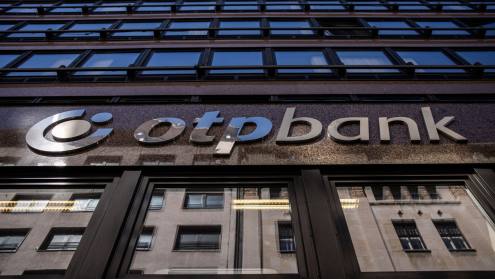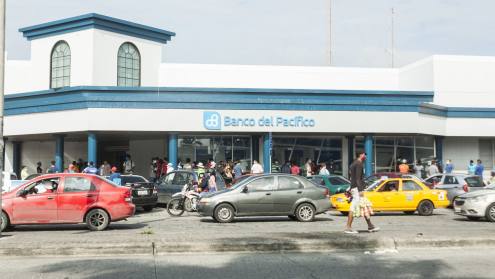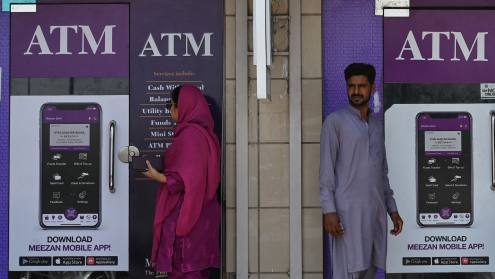The Banker’s Top 250 European Banks ranking reveals a regional banking sector that has strengthened its hand in terms of Tier 1 capital, but continues to endure difficulties linked to weak profitability. These results indicate that most of Europe’s largest lenders are in a good position to weather the uncertainties linked to the ongoing global health crisis. Over the longer term, however, more work will be required to cut costs, improve operational efficiencies and tap into new markets if Europe’s lenders are going to forge a more sustainable growth trajectory.
Among the region’s 10 largest banks by Tier 1 capital, there have been very few changes in this year’s ranking. The UK’s HSBC and France’s Crédit Agricole maintain first and second positions respectively, while another French bank, BNP Paribas, comes in a close third. All three institutions enjoyed improvements to their Tier 1 capital positions, as well as their total assets, over the 2019 review period. But only BNP Paribas registered an increase to its pre-tax profits, which expanded by an impressive 9.1%.
Meanwhile, Italy’s UniCredit climbed two places to reach seventh in the 2020 ranking, owing to a 9.2% increase in its Tier 1 capital position, while France’s Crédit Mutuel jumped two positions to eighth off the back of a 7.3% expansion of the same metric. Germany’s Deutsche Bank fell to 10th position in 2020, from seventh last year, as its Tier 1 capital contracted by more than 10%. Among Europe’s top 20 largest banks, a notable gain was achieved by Switzerland’s UBS, which climbed from 16th in the 2019 ranking to 13th place this year.
Beyond the main ranking, Austria’s best-performing banks table exposes the diverging fortunes of the country’s five biggest lenders. Leading the pack, with an overall performance score of 7.33, is Raiffeisenlandesbank Niederoesterreich-Wien. This is underscored by the bank’s table-topping performance in the operational efficiency, liquidity and soundness metrics, while it also fared well in terms of its leverage, return on risk, asset quality and profitability, by scooping second place in these categories. Raiffeisen Bank International came in second position overall, with the lender scoring well in the liquidity and growth stakes by securing second position in both. Meanwhile, the country’s largest bank by Tier 1 capital, Erste Group, placed fourth; its only table-topping result was in the growth category.
In Denmark, Spar Nord Bank achieved the highest overall performance score of 6.63 out of the nation’s largest five lenders. This was helped by a country-beating performance in terms of the profitability and growth tables. Nykredit, which secured second place overall, came in first with respect to its operational efficiency and return on risk, while achieving an overall performance score of 5.65. Danske Bank, the country’s biggest bank, placed in the middle of the pack, with an overall score of 5.12, helped by its strong showing in operational efficiency.
Elsewhere in northern Europe, Dutch lenders performed particularly well in the 2020 ranking, with 12 banks in the top 250. Among the top five, the highest overall performance score was achieved by ING Group, the nation’s largest bank, with a total of 7.42. Its dominance in the best-performance tables was buttressed by its peerless growth, profitability, operational efficiency and leverage metrics. In second place overall was SNS Bank with a score of 6.49. Notably, the lender secured first place in terms of its asset quality and return on risk. ABN Amro Group, which came a close third with an overall score of 6.49, scooped first place in the liquidity and soundness metrics. Rabobank and Bank Nederlandse Gemeenten round out the Dutch top five country table with overall scores of 5.98 and 3.4, respectively.
In the region’s south, Portugal’s best-performing lender, Caixa Geral de Depositos, achieved an overall score of 8.34. Indeed, the bank registered a near complete table-topping performance in the sub-categories, with only its growth and operational efficiency scores missing out on the number one position relative to its country peers. Credito Agricola and Millennium BCP were second and third respectively, posting overall scores of 6.54 and 6. Further east, Greek banks enjoyed solid — if not stellar — figures with Eurobank Ergasias, the country’s best-performing lender, scoring 6.3 overall. Piraeus Bank Group achieved a close second position, coming first in profitability, operational efficiency and return on risk. Alpha Bank and the National Bank of Greece round out the Greek top four table with scores of 5.45 and 4.16 respectively.
In Switzerland, it was a similar story. The country’s best-performing bank, Credit Suisse, posted an overall performance score of 6.14, based on its standout return on risk metrics, where it achieved first place, as well as its strong profitability and growth numbers, which came in second among the featured Swiss lenders. J Safra Sarasin Holding came in a close second overall with a performance score of 6.1, thanks to its table-topping achievements in the profitability, liquidity and soundness metrics. Meanwhile, the country’s largest lender, UBS, came in last among the five biggest Swiss banks, only doing modestly well in asset quality and liquidity.
To see the best-performance results for France, Germany, Italy, Spain and the UK, go to The Banker’s Top 1000 World Banks ranking.


















